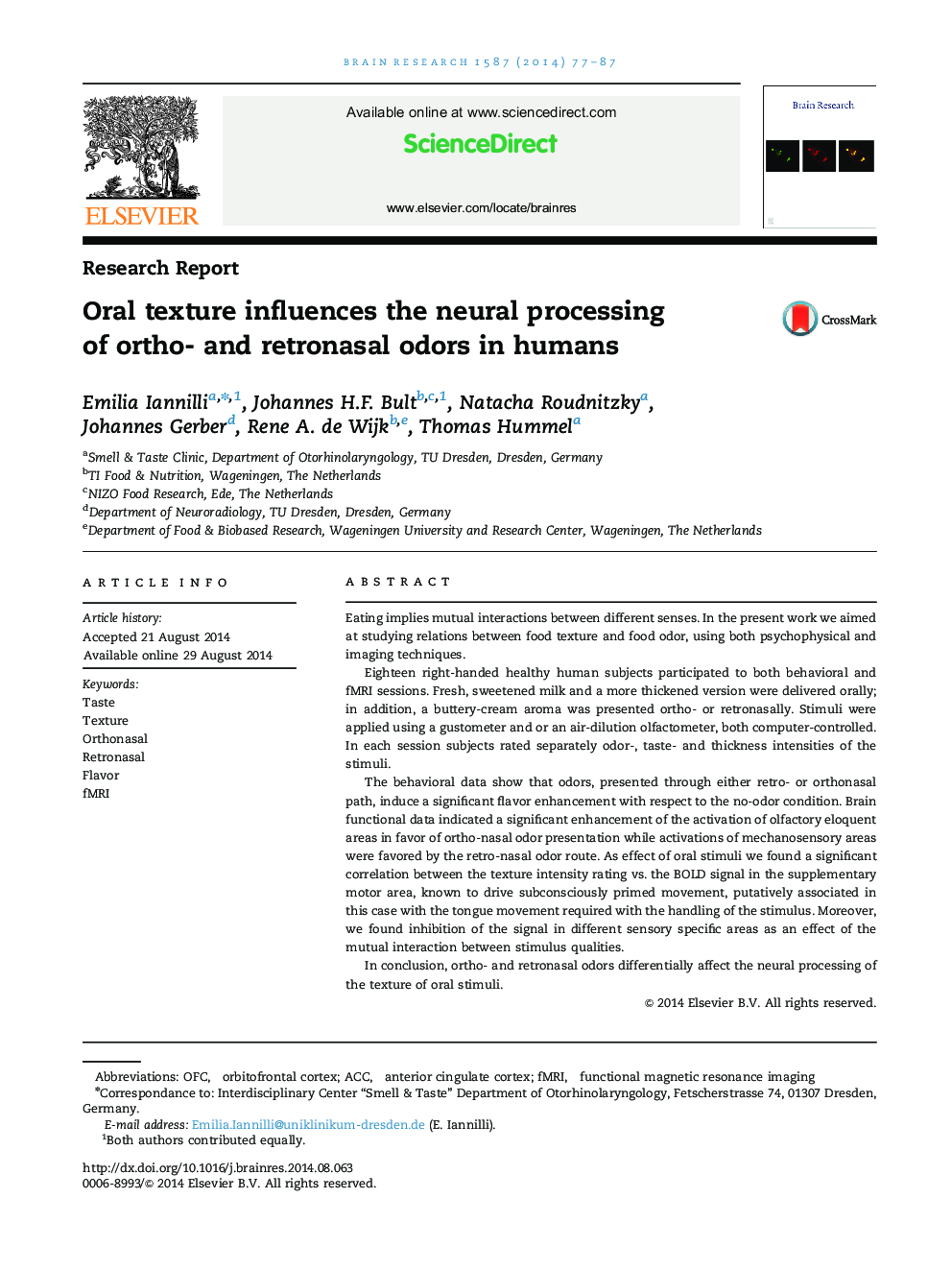| Article ID | Journal | Published Year | Pages | File Type |
|---|---|---|---|---|
| 6263267 | Brain Research | 2014 | 11 Pages |
â¢We investigated the relations between food texture, flavor and ortho- or retronasal route.â¢fMRI and psychophysics was used.â¢Odors induced a significant flavor enhancement with respect to the odorless air condition.â¢Olfactory eloquent areas where highlighted in ortho-nasal odor presentation.â¢Activations of mechanosensory areas were favored by the retro-nasal odor route.
Eating implies mutual interactions between different senses. In the present work we aimed at studying relations between food texture and food odor, using both psychophysical and imaging techniques.Eighteen right-handed healthy human subjects participated to both behavioral and fMRI sessions. Fresh, sweetened milk and a more thickened version were delivered orally; in addition, a buttery-cream aroma was presented ortho- or retronasally. Stimuli were applied using a gustometer and or an air-dilution olfactometer, both computer-controlled. In each session subjects rated separately odor-, taste- and thickness intensities of the stimuli.The behavioral data show that odors, presented through either retro- or orthonasal path, induce a significant flavor enhancement with respect to the no-odor condition. Brain functional data indicated a significant enhancement of the activation of olfactory eloquent areas in favor of ortho-nasal odor presentation while activations of mechanosensory areas were favored by the retro-nasal odor route. As effect of oral stimuli we found a significant correlation between the texture intensity rating vs. the BOLD signal in the supplementary motor area, known to drive subconsciously primed movement, putatively associated in this case with the tongue movement required with the handling of the stimulus. Moreover, we found inhibition of the signal in different sensory specific areas as an effect of the mutual interaction between stimulus qualities.In conclusion, ortho- and retronasal odors differentially affect the neural processing of the texture of oral stimuli.
